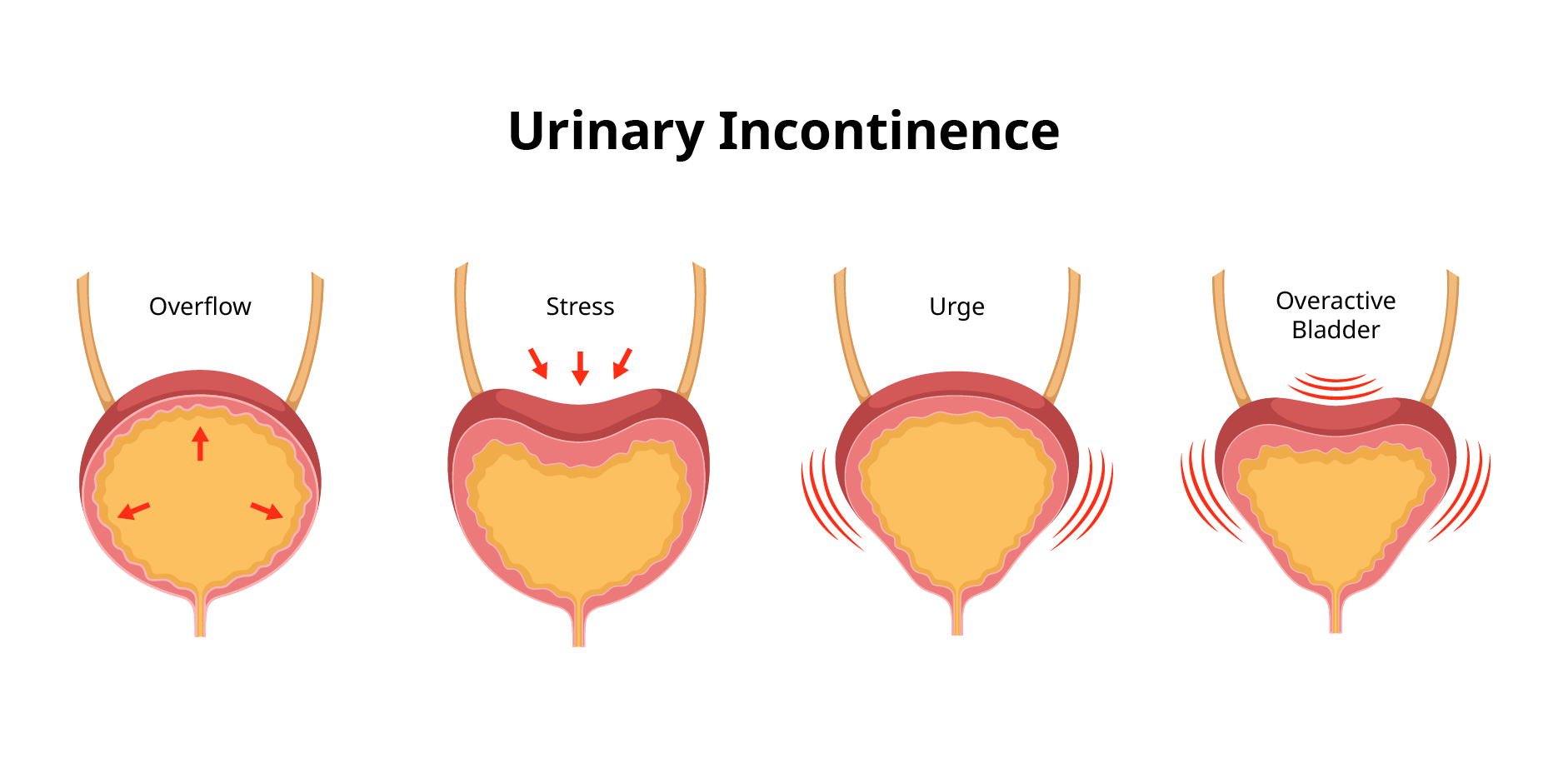Content on this page:
Content on this page:
Introduction
Urinary incontinence (UI) is a complaint of involuntary urine leakage.
Epidemiology
Urinary incontinence is a common condition and increases in prevalence
with age, affecting both sexes. The
prevalence of urinary incontinence in older adults was 13%, as seen in several
studies conducted in different regions of Asia.
In women, its prevalence peaks around menopause and rises steadily into
later life. In men, the prevalence is much lower than in women, with no spikes
in prevalence.
Pathophysiology
Maintenance
of continence is noted when the urethral closure pressure exceeds the detrusor
pressure. Incontinence may be caused by bladder dysfunction, sphincter
dysfunction or a combination of both. There are several changes in the lower
urinary system related to aging such as decreased bladder capacity with a feeling
of fullness, decreased rate of detrusor muscle contraction, decreased pelvic
floor resistance and increased residual urine volume that can cause urinary
incontinence.
In
women, the bladder and urethra are supported by the anterior vaginal wall. Menopausal
women, due to their decrease in estrogen and collagen, have a reduced
elasticity of the of the detrusor muscle of the ductus arteriosus and atrophic
changes in the pelvic floor muscle.
Risk Factors
Reversible Factors
Reversible risk factors include:
- Body mass index >30 kg/m2
- Smoking
- High caffeine intake
- Participation in high-impact sports
- Diabetes
- Depression
- Central nervous system (CNS) disorders
- Recurrent urinary tract infection (UTI)
- Constipation
- Drugs (eg alpha agonists, alpha1 blockers, angiotensin-converting enzyme [ACE] inhibitors, antiarrhythmics, anticholinergics, antidepressants, antihistamines, antimuscarinics, antipsychotics, benzodiazepines, beta3 agonists, decongestants, diuretics, estrogens, opioids, skeletal muscle relaxants, spasmolytics)
- Pelvic organ prolapses
- Environmental barrier
Irreversible Factors
Irreversible risk factors include:
- Increasing age
- Race
- Educational attainment
- Family history
- Childhood nocturnal enuresis or daytime wetting
- Multiparity
- Forceps delivery
- Menopause
- Hysterectomy
- Surgery for pelvic organ prolapse
Classification
Major Types
Stress Urinary Incontinence
Stress urinary incontinence is involuntary urine leakage on effort or
exertion or when coughing or sneezing. This occurs during increased
intraabdominal pressure that overcomes the sphincter mechanism in the absence
of bladder contraction. Irritative voiding symptoms and nocturia are absent.
This may be caused by poor pelvic support or intrinsic sphincter deficiency.
Complicated stress UI includes a history of recurrent urinary tract
infections (UTIs), previous pelvic floor repairs, or concurrent urge- or
voiding dysfunction-related symptoms. Stress UI in men is primarily associated
with surgery of the prostate.
Urge Urinary Incontinence
Urge urinary incontinence is involuntary urine leakage due to detrusor
overactivity, associated with or immediately preceded by urgency. Patients are
unable to hold back their urine when they feel the intense need to void. This
may be caused by detrusor myopathy, neuropathy, bladder cancer, stones or
infections.
Mixed Urinary Incontinence
Mixed urinary incontinence is involuntary urine leakage associated with
both urgency and exertion, effort, coughing or sneezing. This is present when
the bladder outlet is weak, and detrusor is overactive.
Overflow Incontinence
Overflow incontinence is also referred to as “incomplete emptying”,
which describes the dribbling or continuous leakage associated with incomplete
bladder emptying. This may be caused by bladder overdistention, impaired
detrusor contraction and/or bladder outlet obstruction. Associated symptoms
include weak urinary stream, intermittency, hesitancy, frequency and nocturia.
Incontinence Related to Reversible Medical Conditions
Transient Incontinence
Transient incontinence arises from an acute medical condition affecting
the lower urinary tract. Symptoms resolve when the medical condition is
addressed and treated.
Functional Incontinence
Functional incontinence arises from chronic impairment of physical
and/or cognitive functioning. This is a diagnosis of exclusion. Symptoms may
resolve by improving the patient’s functional status, treating comorbidities
and changing medications.
Overactive Bladder (OAB) Syndrome
Overactive bladder syndrome is urgency with or without urge
incontinence usually accompanied by complaints of frequency and nocturia and
without UTI or other obvious pathology.
 Urinary Incontinence_Disease Background
Urinary Incontinence_Disease Background